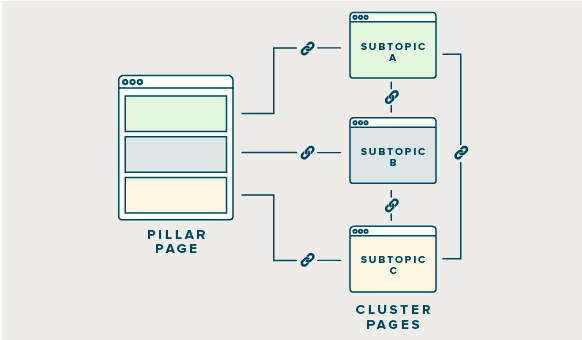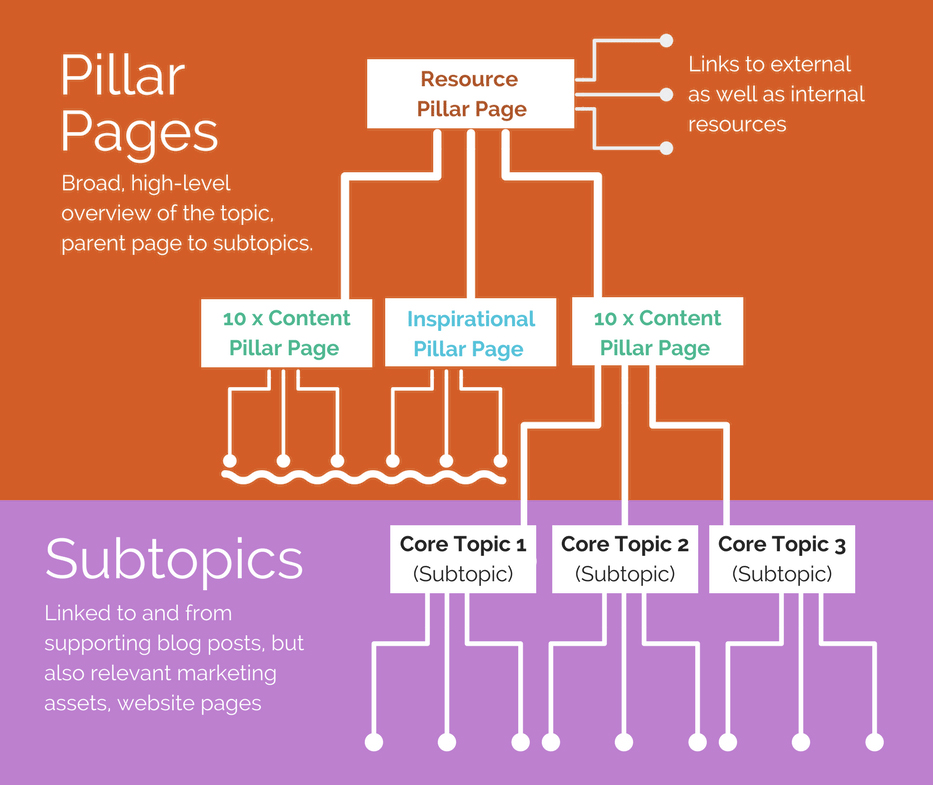The concept of content marketing is not new. This method is utilized by marketing experts to increase engagement and boost conversion rates for businesses of all sizes. With the rise of professional blogging and blogs as an integral part of a brand's marketing strategy, content marketing has assumed a prominent position.

Depending on the size of a brand, a different individual will be tasked with implementing a content marketing plan. Large companies have a CMO, or chief marketing officer, who can do the task with his team or employ a content marketing professional. Smaller businesses use consultants and form tiny content marketing teams.
However, not all brands are large enough to engage outside assistance for their content marketing plan. As long as you understand the fundamentals of an effective marketing plan, you can design one for your blog or brand.
What is required to get started?
Glad you asked! First, you must construct a content marketing foundation consisting of topic clusters and pillar pages. Believe it or not, these two elements comprise the majority of a content marketing approach.
Create Amazing Websites
With the best free page builder Elementor
Start NowWe define topic clusters and pillar pages in relation to a content marketing strategy in this article. In addition, we present instances of fictitious businesses to illustrate how the two notions interact. Plus, some excellent films from content marketing professionals we admire.
Let's dive in.
What Are Topic Clusters?
Topic clusters are the foundation of every content marketing plan. These serve as the basis for the entire plan.
However, what is a topic cluster?

Consider a topic to be a portion or category of what a brand or blog offers its audience. Most individuals initially believe that subject clusters only apply to blog postings. In reality, topic clusters contain all forms of content. From landing sites to blog entries, social media updates, email newsletters, and even offline printed materials.
Each of these pieces of content belongs to a certain topic cluster.
How To Create Topic Cluster?
Analyze the company and its brand messaging to develop topic clusters. Consider what the firm intends to accomplish and what it has already done to fulfill its growth objectives.
Conduct a content gap analysis using the ideal client persona before building and structuring topic clusters. A gap analysis identifies the specific information that the target audience needs and that the business can give.
These gaps become topics. Which become subject clusters in turn.
Another strategy is to examine existing material and peruse analytics results. Determine which subject or category-based content group fared the best. Then, each group is transformed into a subject.
Topic Cluster Creation Example
A fictitious handcrafted vegan leather online shoe business performs a gap analysis to form topic groups.

A handcrafted vegan leather shoe firm hires a content marketer to aid in the expansion of its business. They perform a content gap analysis to identify what their audience desires but is not receiving. The objective of a gap analysis is to identify unresolved pain points among ideal customers. If a pain point is identified without a suitable remedy from the brand, it becomes a cluster topic.
The content marketer discovers that vegan leather shoe purchasers are uncertain about how to properly care for their shoes. "How to care for vegan leather" is the first topic in the new set of topic clusters.
Setting Up The Topic Cluster
Once a subject is defined, it’s time to create the cluster.
Topic clusters consist of a primary topic at the top, followed by subtopics and occasionally sub-sub topics. Each piece of content for the topic corresponds to one of the subtopics. Imagine the topic cluster as a web or flowchart.
Possible subtopics for "How to Care for Vegan Leather" are:
- Concerning vegan leather shoes
- Laundering vegan leather garments
- Tools and supplies to care for vegan leather
Create the content next. For instance, a number of blog posts on the subtopic of vegan leather shoes:
- What to do when your shoes get wet in rain or snow.
- How to keep the material of your vegan leather shoes from cracking
- Are shoes made of vegan leather truly waterproof?
Designers produce infographics, movies, printables, and social media graphics using the text of blog entries. The team distributes newsletters, prints infographic postcards to include shoe shipments, writes guest blogs for other related websites, etc.
All content created for that topic falls under the umbrella of this topic cluster. The web evolves and expands as the material is developed for each topic cluster.
But without a pillar page, a topic cluster is incomplete.
What Are Pillar Pages?
If the topic cluster were a web, then pillar pages would be the spider's nests. Considering that a topic cluster consists of a major topic and subtopics, a pillar page serves as the foundation for each of them.
A pillar page serves two purposes:
- To provide valuable calls-to-action that will increase a brand's business through increased leads and sales.
- Exist as a valuable inbound link from the entirety of the content provided for this topic cluster.
In the instance of the shoe store that sells shoes made from vegan leather, their new pillar page is one about how to care for vegan leather. On this page, the company can provide a wealth of useful information on the issue. Tips and tricks on how to care for their shoes, as well as informative films and a list of their favorite items for caring for vegan leather. Obviously, there would also be a section with their shoes for sale that compliments the theme of vegan leather shoe maintenance.
Then, as additional information is developed to enhance the topic, a link to the pillar page is added. This may include blog posts, social media updates, YouTube videos, Instagram Stories, etc. The concept is that the relationship between a pillar page and the material published for that subject cluster is in a constant state of back-and-forth mobility.
For example, here is Elementor Piller Page.

How To Create Piller Page?

Comparing the production of a pillar page to the creation of landing pages is the simplest approach to conceptualizing this process. Landing pages are web pages that fulfill a particular purpose. From collecting email addresses through a downloadable product to selling a certain range of physical products. In many ways, a landing page can be a pillar page.
Optimized pillar pages include short and long keywords related to the topic cluster, custom videos, numbered lists such as how-tos or frequently asked questions, calls to action, and a great deal of valuable content that will not only get the page to the top of search engine results but also serve as a valuable resource for clients. Use storytelling strategies to connect on a relatable level with your audience.
Importance Of Valuable Content In Topic Clusters And Pillar Pages
Even while subject clusters and pillar pages are the core of content marketing, they are worthless if their value is subpar. Only well-crafted and optimized content will contribute to the growth of a firm.
Remember that subject clusters and pillar pages cannot be created spontaneously. Initial market research and gap analysis must be exhaustive and comprehensive. Utilize design thinking for research and analysis. Determine the needs of clients and consumers. Consider their circumstances and endeavor to place yourself in their shoes. It is the best technique to determine if the niche-specific gap analysis is accurate.
Final Thoughts
Content marketing is not an approach to be taken lightly. There are numerous steps to a successful approach, and it is essential to understand how to construct topic clusters with pillar pages. Remember to add value to all content and optimize for SEO.
Have you implemented a content marketing strategy for your company? A content marketing approach can be advantageous for even a tiny creative freelance brand. Share your opinions in the comments and start a discussion about content marketing fundamentals.





